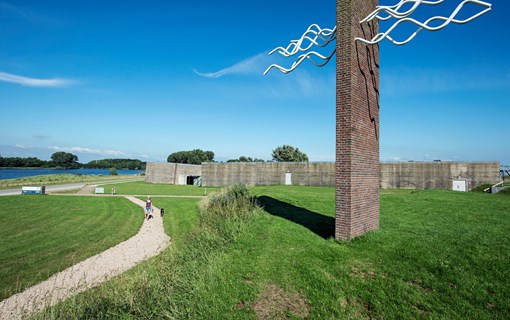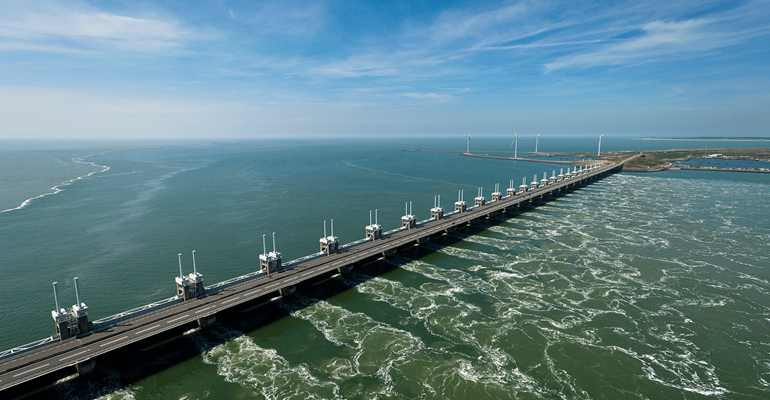
Watersnoodroute
Recreational cycle routes

The Delta Works were the Netherlands’ answer to the Great Flood of 1953. They provide extra protection against extreme high tides, but they have also improved access to Zeeland, as well as created new nature reserves. Read more about the world-famous Delta Works.
In the night of 31 January and 1 February 1953, a massive storm brought devastation to parts of the Netherlands. These floods were caused by a severe north-westerly storm in combination with spring tides. Dykes burst and large parts of Zeeland were inundated by water. There were large numbers of casualties. The Delta Works were intended to make sure that no such disaster could happen again. They now form the largest network of defences in the Netherlands against flooding.
The Delta Works consist of a system of storm surge barriers, locks and dams. In Zeeland you can find Zandkreekdam, Veerse Gatdam, Grevelingendam, Brouwersdam, Oesterdam, Oosterscheldekering, Bathse Spuisluis and Philipsdam. Read more about Zeeland’s Delta Works below. Did you know that the Oosterscheldekering - or Eastern Scheldt storm surge barrier - is the largest of its kind in the Netherlands?
After the catastrophe, a specially formed Delta Commission drew up the so-called Delta Plan. The purpose of this plan was to prevent a disaster such as happened in 1953 ever again. The Delta Plan presented a formidable challenge to the hydraulic engineers of the day. The reduction in the length of the coastline through the closure of large estuaries with huge dams and moveable storm-surge barriers had never been done before. Likewise, the construction of such large and complex barriers was unique. The Delta Works put the Netherlands firmly on the international map as a leading hydraulic engineering nation.
The Delta Works not only provide protection against the sea. By connecting up the islands of Zeeland and Zuid-Holland with the mainland, they also contribute to increased access. In addition, the Delta Works have helped create a number of areas of outstanding natural beauty. For example, the creation of Veerse Meer (now a lagoon) as a result of Zandkreekdam and Veerse Gatdam being built.
At the centre of the Oosterscheldekering is the artificially created island of Neeltje Jans. Parts of the storm surge barrier were assembled on this small island. Now it has become a nature reserve with extensive beaches, offering magnificent views of the Oosterscheldekering and an area of dunes popular with many breeding birds. Deltapark Neeltje Jans is on the fringes of the island. This ‘theme park’ revolves around water and the Delta Works.
If you would like to know more about the Delta Works, you should also plan a visit to the Watersnoodmuseum. The museum will explain everything about the events surrounding the Great Flood, the Delta Works and how we are currently dealing with rising sea levels.